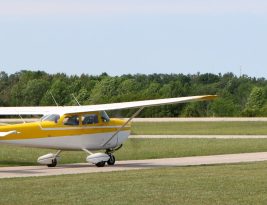Airport pavement markings and signs provide information useful to pilots during takeoff, landing, and taxiing. Uniformity in airport markings and signs from one airport to another enhances safety and improves efficiency. An illustrated guide to these markings, from Barry Schiff’s An Illustrated Guide to Flying is available in the
Tag: FAA
View All CategoriesGetting started with your flight training and curious about the differences between ratings? As per 14 CFR 61.5, there are seven pilot certificates: student, sport pilot, recreational, private, commercial, airline transport pilot, and flight instructor. This summary comes from Bob Gardner’s The Complete Private Pilot. The
…Today’s posts is the first part in a two part series on the pitot-static system and associated pitot-static instruments. We will begin by covering a quick general overview of the pitot-static system as seen in the picture below.
The pitot-static system is responsible for the operation of the airspeed indicator,
…Today, we’ll go over the airspeed indicator (ASI). This explanation comes from the FAA textbook Pilot’s Handbook of Aeronautical Knowledge.
The ASI is a sensitive, differential pressure gauge which measures and promptly indicates the difference between pitot (impact/dynamic pressure) and static pressure. These two
…According to FAA research and safety reports there are three distinct types of communication errors:
An absence of a pilot readback. The pilot merely acknowledges the clearance that he/she in actuality misunderstood.
A Readback/hearback error. When a pilot reads back a clearance incorrectly and the controller fails to catch the
…VORs are anything but standard. When operating under the guidance of radio navigational aids like a VOR it’s important to understand the restrictions and standard service volumes (SSV) associated with each aid of intended use. VOR standard service volumes are designated in three classes: Terminal (T), Low Altitude (L), and
…We’re devoting this week’s posts to the VOR, a radio navigation system used worldwide by private and commercial pilots. This introduction comes from The Student Pilot’s Flight Manual, by William Kershner.
The most useful of the enroute radio navigation aids, other than GPS, is the VHF omnirange,
…Coordinated Universal Time, Universal Time Coordinated, Greenwich Mean Time, Zulu Time—I am sure you have heard these terms at some point in your flight training, but what is all of it? To keep it simple these are essentially one in the same: time corrected for seasonal variations in the earth’s rotation
…

